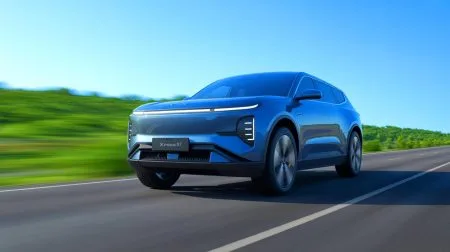| IN A NUTSHELL |
|
In recent years, the automotive industry has been grappling with the need to balance performance with environmental sustainability. Carbon fiber, once heralded as the pinnacle of engineering innovation, has become a staple in high-performance vehicles due to its exceptional strength-to-weight ratio. However, its production is energy-intensive and recycling the material presents significant challenges. Now, BMW, a leader in automotive innovation, is exploring an alternative material that has the potential to revolutionize the industry: flax fiber. This natural material, which has been used for centuries in various industries, is being tested for its viability in automotive applications, promising a more sustainable future.
The Rise of Flax Fiber
BMW has been experimenting with flax fiber in its motorsport programs since 2019, marking a significant step in the material’s development. Initially, the company utilized flax fiber components in its Formula E vehicles and later in models such as the M4 DTM and M4 GT4. These vehicles feature body parts made from flax fiber instead of traditional carbon-fiber-reinforced plastic. These components, developed in collaboration with Swiss startup Bcomp, have already demonstrated their capabilities in one of the most demanding endurance races, the 24 Hours of Nürburgring.
Flax fiber offers several advantages over carbon fiber. It is a natural material that reduces the carbon footprint of vehicle production significantly. Bcomp’s innovations, such as Amplitex and Powerribs, enhance the mechanical properties of flax fiber, making it suitable for high-performance applications. Amplitex is a European flax fiber fabric used either as-is or infused with a thermoplastic resin to create structural elements. Powerribs provide additional rigidity without adding unnecessary weight, much like the veins of a leaf.
Fact Check: Mercedes Confirms They Will Not Be Using BMW Engines
A Potential Game Changer for the Industry
The automotive sector is beginning to recognize the potential of flax fiber for mainstream production. BMW has already showcased prototypes featuring roofs, rear diffusers, and interior trim made from flax. These components not only minimize carbon emissions during production but also offer easier recycling compared to traditional carbon fiber. Other manufacturers, such as Cupra, Kia, Polestar, and Porsche, have started integrating flax fiber into their vehicles, demonstrating the material’s growing acceptance within the industry.
Despite the promising developments, some skepticism remains. Transitioning from carbon fiber to flax fiber is not an overnight process. Comprehensive testing is required to ensure that flax fiber components meet the stringent performance and safety standards of the automotive industry. However, as history has shown with technologies like turbocharging, direct injection, and carbon-ceramic brakes, innovations often migrate from the racetrack to production vehicles once proven effective.
Flax Fiber’s Path to Mainstream Adoption
Flax fiber’s journey from niche motorsport applications to potential mainstream acceptance represents a broader trend towards sustainable materials in automotive manufacturing. The benefits of flax fiber are clear: it is lightweight, environmentally friendly, and offers competitive performance characteristics. However, the industry must overcome several hurdles before flax fiber can fully replace carbon fiber in vehicles.
Cost, scalability, and consumer acceptance are critical factors that will determine the success of flax fiber adoption. While initial tests are promising, large-scale production requires significant investment and infrastructure development. Manufacturers will also need to educate consumers on the benefits of flax fiber to ensure its acceptance in the market. Nonetheless, the growing interest in sustainable materials and the industry’s commitment to reducing environmental impact suggest a promising future for flax fiber.
The Future of Sustainable Automotive Materials
The shift towards sustainable materials like flax fiber in the automotive industry reflects a broader movement towards environmental responsibility. As manufacturers continue to innovate, the potential for flax fiber to become a staple in vehicle production grows. The material’s lightweight and environmentally friendly properties align with the industry’s goals to reduce emissions and improve fuel efficiency.
As the automotive industry continues to evolve, the question remains: will flax fiber and other sustainable materials become the new standard in vehicle manufacturing? The answer may depend on the industry’s ability to balance performance, cost, and environmental impact while meeting consumer demands for innovative and sustainable products.
Did you like it? 4.5/5 (22)







Wow, flax fiber sounds like a game changer! 🌿 How soon can we expect it in consumer cars?
Wow, flax fiber sounds like a game-changer! How long until we see it in mainstream cars? 🚗